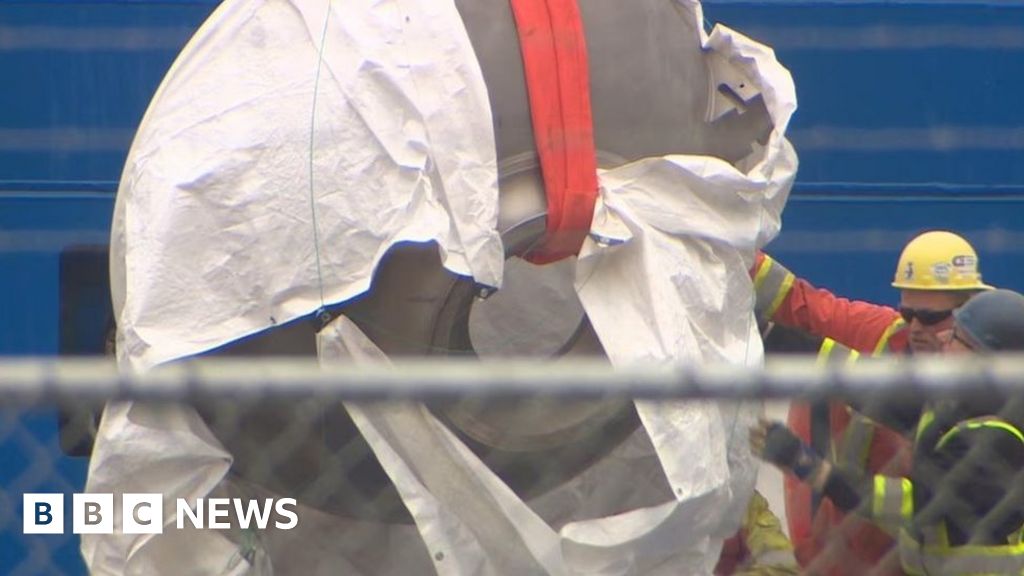Pieces of the submersible are seen for the first time after being recovered from the Atlantic.
With all of the animations of how it imploded, those pieces sure look intact comparatively.
The animations I saw were pretty crude and I don’t think they were particularly well modeled on the way Titan was actually built or its materials. It was a tube, two titanium hemispheres attached on either end, and then a bunch of non-watertight things bolted or strapped to it. If we assume the carbon fiber tube is what failed, the domes would have sorta banged into each other but not been subject to crushing forces (and then forces sufficient to shatter the tube, not to crush the domes) for more than the milliseconds that the implosion took, then they, like every other remaining part of the sub, would have had equalized pressure. Then, the non-malleable nature of carbon fiber might have resulted in large shards rather than anything crumpled.
The animations look more like they were modeling the whole thing as a metal pressure vessel, with some fanciful imagining of the rebound “explosion.”
Agreed on all accounts, except the perfectly intact dome. If it was attached super tightly to anything, like the hull, when that thing crushed it would’ve deformed the dome just as much I would think. This is all semi-educated guessing though.
I think if it like a pop can - tube with domed ends. If I crush the can as violently as the math suggests happened, the ends are going to be deformed. Right?
Not if they popped off…
Since there are no fragments of the carbon hull stuck to the tutanium parts it seems the bond wasn’t that strong.
Yeah, I’ve read how experts stated that the point where the dissimilar materials meet would be the most likely location of the failure. Titanium and carbon fiber will certainly behave differently under that pressure.
I think it’s far less likely to be the root cause, but I do wonder if the 380mm acrylic viewport had anything to do with the failure. It wasn’t rated for anywhere near that depth.
At the meeting Lochridge discovered why he had been denied access to the viewport information from the Engineering department—the viewport at the forward of the submersible was only built to a certified pressure of 1,300 meters, although OceanGate intended to take passengers down to depths of 4,000 meters. Lochridge learned that the viewport manufacturer would only certify to a depth of 1,300 meters due to experimental design of the viewport supplied by OceanGate, which was out of the Pressure Vessels for Human Occupancy (“PVHO”) standards. OceanGate refused to pay for the manufacturer to build a viewport that would meet the required depth of 4,000 meters.





